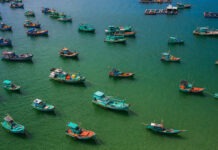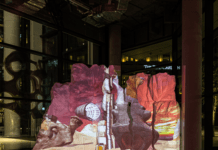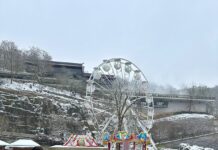Often seen as simply a beach destination, Tunisia has a bucketful of surprising tourist attractions and things to do for those that venture off the sandy shores. This is North Africa wrapped up into one bite-sized package, with vast Sahara dunes, mammoth ancient ruins, and exotic cities that are home to a sprawling tangle of souks. Tunisia was Rome’s breadbasket, and the cultural riches the Romans left behind are more than enough reason to visit. But the history of Arab Empires has also bestowed the country with some of the region’s most beautiful examples of Islamic architecture.



Kairouan: With mosques, madrassas, and tombs aplenty, Kairouan has more than its fair share of monuments as the fourth most important city for those of the Muslim faith. The Arabic architecture here is truly inspiring, and the skyline is full of skinny minarets and bulky domes. But it is probably the back alleys of the city’s medina that steal the show. With narrow, maze-like lanes lined with crumbling colorful houses, Kairouan’s old town has an enchanting, lost-in-time atmosphere that is a true highlight of a visit here.

Sousse Medina: Overlooked by the mighty fortifications of the Ribat and Kasbah, the medina in Sousse just begs to be explored. This lovely old town district is a warren of looping lanes, rimmed by whitewashed houses, and a shopping paradise with a tempting selection of ceramics, leatherwork, and metalwork on display. Away from the stalls along the bustling souk streets, the quiet and rambling back alleys, dusted in white and blue, are a charming place to dive in and sample local life.

Grand Erg Oriental: Tunisia’s vast Sahara covers much of the country’s interior, and the most beautiful corner of the desert is the field of sand dunes known as the Grand Erg Oriental. These poetically beautiful dunes are a surreal and gorgeous landscape of huge waves, shaped by the ever-shifting desert sands. For many visitors, this is an adventure playground for riding dune buggies and camel treks, but nothing tops the simple pleasure of sitting atop one of these mammoth sand mountains and watching the sun set over the Sahara.


Chott el Djerid: The moonscape surroundings of the Chott el Djerid are a storybook panorama brought to life; filled with shimmering mirages on the horizon and jigsaw puzzle pieces of blindingly white cracked land under foot. This sprawling salt pan is a desolate and otherworldly scene that wows all who visit with its stark and brutal beauty. A sightseeing trip here proves that nature produces much weirder landscapes than you could ever imagine.

Hammamet: This is Tunisia’s top sun-and-sea resort; a dreamy place dotted with pristine white buildings set beside a bright blue sea. The relaxing charms of this town woo all who come to sunbathe on the soft, white sand, with off-the-beach pursuits usually being nothing more strenuous than gentle strolls and a spot of shopping in the restored old town souks. It is a no stress kind of place that sums up the pleasures of Tunisia in one pretty package.

Bulla Regia: Tunisia has no shortage of Roman ruins, but Bulla Regia near Tabarka is the country’s most interesting and intriguing site. Here, the Roman inhabitants coped with the harsh summer climate by ingeniously building their villas underground, which has left the city houses incredibly well preserved today. For history lovers, this is a unique opportunity to walk through actual Roman houses, with their walls still intact.


Monastir Ribat: One of Tunisia’s most photographed buildings and a film star to boot, the Ribat in Monastir is a bulky walled and exceptionally well-preserved fort. Looming over the harbor, the Ribat was originally part of a string of forts that protected the coastline, but today is one of the few still standing. Its defensive purposes may have long since faded, but this golden-stoned relic is now one of Tunisia’s most recognizable landmarks.

El Djem Amphitheater: This incredibly well preserved Roman relic is Tunisia’s big sightseeing highlight and one of the best examples of amphitheater architecture left standing in the world, reminding of Rome’s once grand grip across North Africa. You can still walk the corridors under the arena, just like the gladiators did. Or, climb up to the top seating tiers and sit staring across the arena, imagining the battles that took place below.























